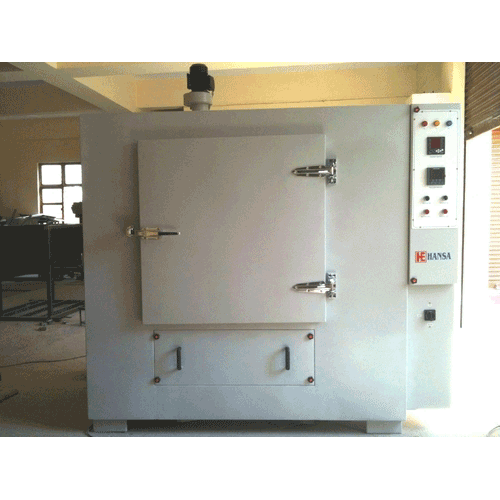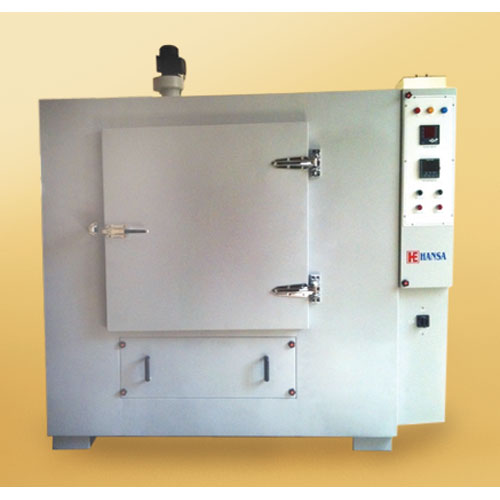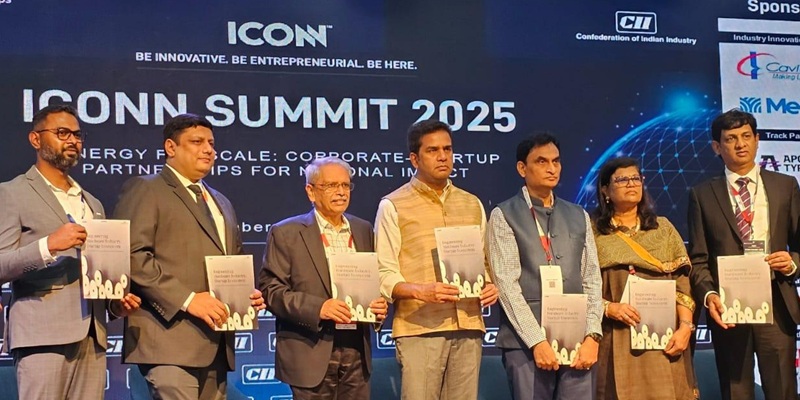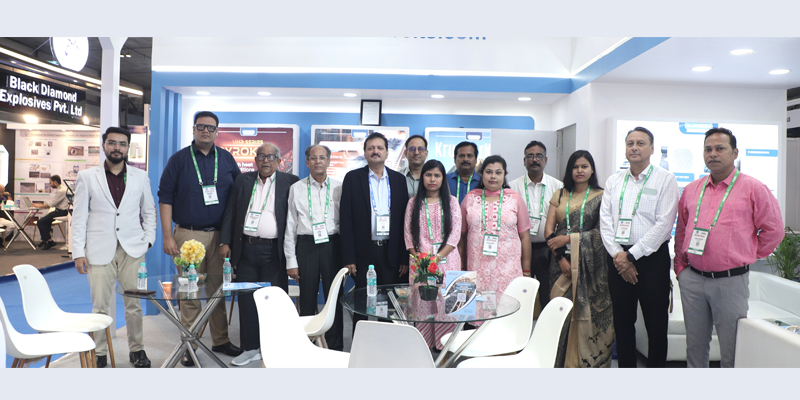Schedule a Call Back
The next 30 years belong to New India under AtmaNirbharatha
 Industry News
Industry News- Mar 09,22

In a conversation with a former Tata Sons Director, sometime back, he mentioned that the new India that is being much talked about by the current government has a significant business component. While the industry has come a long way, there is still a lot to be done. In fact, the next thirty years period is full of promise, a period when India will become a beacon of sustainable industrial development. Taking this theme forward, what does peeping into the crystal ball look like?
In the 75th year after independence, many Indians will want to give vent to their nostalgia, to fondly remember old memories, forget old wounds and injustices, learn from the mistakes of the past, and look to a future of hope, prosperity and contentment. The imagined future will be a rich tapestry of peace, justice, safety, a humane way of life and the continuing spiritual quest to find one’s true purpose in life.
The 75 years period after independence can be dissected into two eras – pre and post liberalisation. Pre 1991 and post 1991. That makes PV Narasimha Rao a central character, between the two Indias, one governed by licenses, and the other licensed to govern. The contrast cannot be sharper, when one sees the overall development, in all spheres, of life in India. The first era, which has already been titled as the ‘license and permit raj’, or, the LP Raj, for short, by many, was nevertheless also known for the enormous advancements made in certain sectors of the Indian polity.
When the country became independent, poverty was rampant, the country was recovering from the massive shock of the partition, the leadership was somewhat confused on what should be the priorities that an independent country should pursue. The push for unification and, at the same time, the push for religion-based homelands had taken their toll. Sardar Patel anchored the unification, while Gandhi and Nehru presided over the land trifurcation. The former, an act of construction, and the latter, one of dissection; one of unification, the other of separation; one for building a modern India, and the other for constraining that growth by creating hostile neighbours, and bringing about a geographical permanent ‘farness’ to the middle east, which did not exist before. Born with such encumbrances, the path ahead was bound to be difficult. And difficult, it was.
How does one go about rebuilding a huge, diversified, poor mass of people, with limited resources and unbounded expectations? This was accomplished in the period 1950 to 1990, 40 years of toil amidst turmoil. While the five-year plans gave the country the scientific management tools to plan and lay out a path, the administrative infrastructure, populated by the IAS, IPS etc. had to manage the plans, without either the necessary knowledge or tools. That the country continued on the path of democracy, without buckling under severe pressure, is a testimony to the resilience of the people and the strength of the 10,000 years long civilisational learnings. The country made headway, although facing many odds, especially on the industrial front.
Three themes dominated the government thinking on the industrial front. One, the Indian industrialist needs to be controlled, supervised, guided and monitored, else he will loot the country and run away with the money. Private enterprise must be curbed. This thinking led to the build-up of a massive bureaucracy and the LP Raj. Second, money needs to be in a few hands only. This was the hangover of the zamindari system which was prevalent in many parts of the country. Third, education was not a priority. While the government set up institutions of higher learning, like the IIT’s and the IIM’s, it left the school and college education alone, except setting up government schools where some of the poor could send their children. Owing to this lop-sided development, in 1990, the country had to sell its gold to repay foreign loans. While much was done, like the green revolution, establishing large capital-intensive industries, installing a system for administering justice, putting up power plants for electricity generation and transmission line towers for distribution, a universal railway system, and goods transport, the country was under a severe economic strain. The LP Raj shackled private enterprise, with much time being spent in greasing palms to obtain licenses, rather than in creating factories and employment.
The gold shipment of 1991 shook the country, and voices of ‘liberalisation’ began to be heeded. PV Narasimha Rao, the architect of the liberalisation, set the country on a new path. Boldly, they decided to ‘turn the Titanic’, and steer it in the path of development. The mantra was ‘remove controls, unfetter the private sector, delete the LP Raj’. This era can be called ‘Build India Raj’.
The mantra worked like magic. This was the time the Indian industry, especially manufacturing, began to sprout and grow. The TQM revolution in Japan found an echo in India, in some big industries, and the CII took up the cudgels on behalf of the industry. Chipping away slowly but surely at the LP Raj, manufacturing and services sectors slowly blossomed and yielded fruits. Some illustrative examples can be cited. The liberalisation of the telecom sector made India the number one user of such services in the world, brought down tariffs by magnitudes, and enabled the country transit into the digital era smoothly. The airline industry was deregulated and the country saw the entrance and exits of many airline companies, as it usually happens in free markets, which place a premium on performance, and are merciless in their treatment of poor fundamentals. The growth in airline traffic in India has been substantial. The railways have improved their performance and travel conditions progressively. With the advent of the GST, the commercial tax regime has been cleaned up, leading to huge productivity gains. However, the other side of the coin was that, corruption once again reared up its head, governance standards fell and ‘chalta hai’ became rampant. The last few years of the latest decade have seen strong economic performance, in addition to considerable alleviation of poverty. If the first 40 years after independence put the world’s largest democracy on a growth path, the second 30 years or so—especially the last six since the advent of PM Modi— have seen a phenomenal transformation in the basic living standards of the common Indian.
The concept of a ‘New India’ – India under ‘AtmaNirbharatha’
That brings us to the present and the future. The next 30 years. The bugle has been sounded for a 5 trillion USD economy. This is the umbrella under which India is expected to become the torch bearer of sustainable growth. AtmaNirbhar is the new slogan under which the current government is providing the leadership for a renewal of the old glory of India. The Swachh Bharat Abhiyaan has set the tone – for a cleaner India, in all senses. A cleaner governance system, a robust business system, a progressive education system which will use the 10,000 years or more civilisational values to build a new India. The recent launch of the ISRO designed moon rocket is a sign of things to come. As they say in Bollywood, ‘yeh sirf trailer hai, abhi toh poori film baaki hai’. The Indian bioscope is on the move, weaving a colourful tableau, inclusive and vibrant. In this scenario, sustainable industrial activity will be the key for a rich, prosperous and progressive India. Indian industry must now embrace ‘excellence’ in all its facets, and blaze a path that will be followed by others.
Water conservation and regulated usage, sustainable use of fossil fuels, minimising polluting emissions, stopping climate threatening actions, using the benefits of the digital age responsibly and equitably, will all have to become a part of the industrial compass. Both manufacturing and service industry sectors have to rigorously practice waste reducing lean methods, quality improving TQM, inventory reducing JIT chains, path breaking and quantum leaping innovations and research and development thrusts. All these have to be done in a holistic manner, and not haphazardly, else, just like what happened in the ‘Build India Raj’, 'chalta hai' will regress the country. A holistic approach to excellence needs to be developed across the board, including start-ups. If we have to hit the target of 5 trillion USD, we need growth rates of 15% in GDP, which will be possible only through the rigorous application of excellence.
Beginning 2014, a New India has been functioning, characterised by national pride, a return to value-based growth, ease of business, and an egalitarian society.
This new era, ‘Build a New India’, is the beginning of a new chapter in the history of the country. A new India, head held high, largely youthful, confident and driven, is based on a new approach to nation building. Boldness, daring but not reckless, deliberate and thoughtful in action, the country is coming out of its timidity, lack of courage and fear driven foreign policy and corruption infested domestic governance. The new narrative is full of ‘Swachh Bharat’, ‘Make in India’, ’Skill India’ and an India which once again is beginning to assert itself in the polity of nations. The new India will, in the next thirty years, become a beacon of sustainable development. The signs are very clear.
Rural will rule
The policy of ‘empowering the rural’ and making rural India a prosperous, demand-driving entity is central. For too long, the rural hinterland has been neglected, and used only for vote bank politics, and poverty alleviation was just a slogan. Only the Green Revolution made life bearable in some parts, but the benefits were not shared with the rural population. Opening Jan Dhan accounts was a master stroke of bringing the rural masses into the banking mainstream. Slowly, the system is starting to chug along, with the emphasis on electronic, cashless transactions practices giving a helping hand. The idea of 100 new Smart Cities, rural start-ups, micro financing, pensions for farmers, are all schemes that are designed to galvanise rural energy. House building, road construction, telecom penetration, all under progress and planned for the future, have led to huge growth in rural purchasing power. Industries such as automobiles, FMCG and others have already felt the impact, and this should soon increase. Empowering the Rural is likely to remain a central theme, going forward.
One particular development, which is a part of the Industry 4.0 bundle, which will likely impact the rural scene in both materialistic as well as philosophical terms is 3D Printing.
Philosophically, this idea is close to the ‘production of one’ concept from the lean manufacturing regime. The lean ideal is the ‘single piece flow’, which means, produce small quantities in a cost-effective manner, so as to meet changing demand situations. In ancient societies, especially in rural India, many items were so produced, the potter, the goldsmith, the ironsmith, the weaver – produced goods in small quantities and sold them in local markets. Due to the close proximity between the producer and the market, waste was avoided, another key lean principle. Philosophically, this method of production enables each individual to function as a useful member of society, practising his craft, based on his skill, and the market would determine the value. 3D printing is likely to take us back to such an era, when ‘mini scale’, personalised manufacturing will empower rural societies. 3D Printing is making great strides, and, India, due to its long history of using such production methods, will likely provide leadership. It would be a nice sight indeed when 3D Printers dot the rural landscape, and give the mass producers a run for their money. Sustainability will be the mantra.
The second pillar is the scientific temper development, led by the space research program of ISRO, domestic defense production, mushrooming IIT’s, IIM’s and NIT’s. Schools and colleges will be given a facelift, and the young Indian population will be far more qualified and prepared for designing a future, like never before. If 5 IIT’s and 3 IIM’s could flood the US market with top grade talent from India between 1950 and 2010, just imagine what 10 times that number will do for the country!
The third pillar is the start-up culture, which is gaining currency with the young. Like ‘each one teach one’, the slogan now is ‘each one, employ one’. Days of Indians working with big companies are numbered, with the start-up enterprises gaining traction, and making all types of goods and services on a scale which will make small companies highly productive and competitive.
The next 30 years are full of promise for the country, and the Indian will play a key role in an exciting new world, where sustainable industrial development will be the watchword.
About the author:
R Jayaraman is the Head, Capstone Projects, at Bhavan's S P Jain Institute of Management & Research (SPJIMR). He has worked in several capacities, including Tata Steel, for over 30 years. He has authored over 60 papers in academic and techno economic journals in India and abroad. Jayaraman is a qualified and trained Malcolm Baldrige and EFQM Business Model Lead Assessor.
Related Stories

Collins Aerospace Opens Major Manufacturing Hub in Bengaluru
New 26-acre facility to produce advanced aerospace systems for global markets.
Read more
Global Electronics Association Unveils Double Materiality Toolkit for CSRD Compliance
The Global Electronics Association has launched a DMA Toolkit to help electronics companies meet CSRD reporting demands with structured, sector-specific guidance.
Read more
GE Aerospace boosts Pune unit with USD 14m upgrade
GE Aerospace is investing USD 14 million to expand and modernise its Pune facility, strengthening manufacturing capability and supporting advanced engine component production.
Read moreRelated Products

Heavy Industrial Ovens
Hansa Enterprises offers a wide range of heavy industrial ovens.

High Quality Industrial Ovens
Hansa Enterprises offers a wide range of high quality industrial ovens. Read more

Hydro Extractor
Guruson International offers a wide range of cone hydro extractor. Read more
















